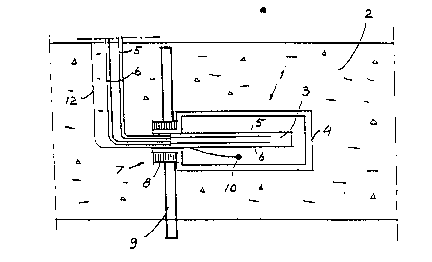Some of the information on this Web page has been provided by external sources. The Government of Canada is not responsible for the accuracy, reliability or currency of the information supplied by external sources. Users wishing to rely upon this information should consult directly with the source of the information. Content provided by external sources is not subject to official languages, privacy and accessibility requirements.
Any discrepancies in the text and image of the Claims and Abstract are due to differing posting times. Text of the Claims and Abstract are posted:
| (12) Patent Application: | (11) CA 2142716 |
|---|---|
| (54) English Title: | TEST PROBE FOR MEASUREMENT OF MOISTURE IN STRUCTURAL MATERIAL |
| (54) French Title: | SONDE POUR MESURER LE DEGRE D'HUMIDITE DANS UN MATERIAU DE CONSTRUCTION |
| Status: | Deemed Abandoned and Beyond the Period of Reinstatement - Pending Response to Notice of Disregarded Communication |
| (51) International Patent Classification (IPC): |
|
|---|---|
| (72) Inventors : |
|
| (73) Owners : |
|
| (71) Applicants : |
|
| (74) Agent: | SMART & BIGGAR LP |
| (74) Associate agent: | |
| (45) Issued: | |
| (86) PCT Filing Date: | 1993-08-17 |
| (87) Open to Public Inspection: | 1994-03-03 |
| Availability of licence: | N/A |
| Dedicated to the Public: | N/A |
| (25) Language of filing: | English |
| Patent Cooperation Treaty (PCT): | Yes |
|---|---|
| (86) PCT Filing Number: | PCT/SE1993/000682 |
| (87) International Publication Number: | WO 1994004910 |
| (85) National Entry: | 1995-02-16 |
| (30) Application Priority Data: | |||||||||
|---|---|---|---|---|---|---|---|---|---|
|
2142716 9404910 PCTABS00030
The invention relates to a test probe (1) primarily intended to
be applied in structural material (2) during the production and/or
building stage or when water damage has occured in a building
and by which moisture measurement can be done undisturbed from
outer factors in following the drying out process of built in
moisture or other inconvenient, supplied moisture which can cause
troubles in the form of mould and/or damages caused by putrefaction, as
well as damages on floor coverings and other structural
elements. The test probe (1) comprises an active part (3) of a
hygroscopic material which is enclosed in an outer, mechanical cover (4),
said cover has that property to allow passage of water steam, but
prevents passage of water in liquid phase.
Note: Claims are shown in the official language in which they were submitted.
Note: Descriptions are shown in the official language in which they were submitted.

2024-08-01:As part of the Next Generation Patents (NGP) transition, the Canadian Patents Database (CPD) now contains a more detailed Event History, which replicates the Event Log of our new back-office solution.
Please note that "Inactive:" events refers to events no longer in use in our new back-office solution.
For a clearer understanding of the status of the application/patent presented on this page, the site Disclaimer , as well as the definitions for Patent , Event History , Maintenance Fee and Payment History should be consulted.
| Description | Date |
|---|---|
| Time Limit for Reversal Expired | 2000-08-17 |
| Application Not Reinstated by Deadline | 2000-08-17 |
| Deemed Abandoned - Failure to Respond to Maintenance Fee Notice | 1999-08-17 |
| Application Published (Open to Public Inspection) | 1994-03-03 |
| Abandonment Date | Reason | Reinstatement Date |
|---|---|---|
| 1999-08-17 |
The last payment was received on 1998-08-17
Note : If the full payment has not been received on or before the date indicated, a further fee may be required which may be one of the following
Please refer to the CIPO Patent Fees web page to see all current fee amounts.
| Fee Type | Anniversary Year | Due Date | Paid Date |
|---|---|---|---|
| MF (application, 4th anniv.) - small | 04 | 1997-08-18 | 1997-08-14 |
| MF (application, 5th anniv.) - small | 05 | 1998-08-17 | 1998-08-17 |
Note: Records showing the ownership history in alphabetical order.
| Current Owners on Record |
|---|
| SAHLENS FUKTKONTROLL |
| Past Owners on Record |
|---|
| NICKLAS SAHLEN |